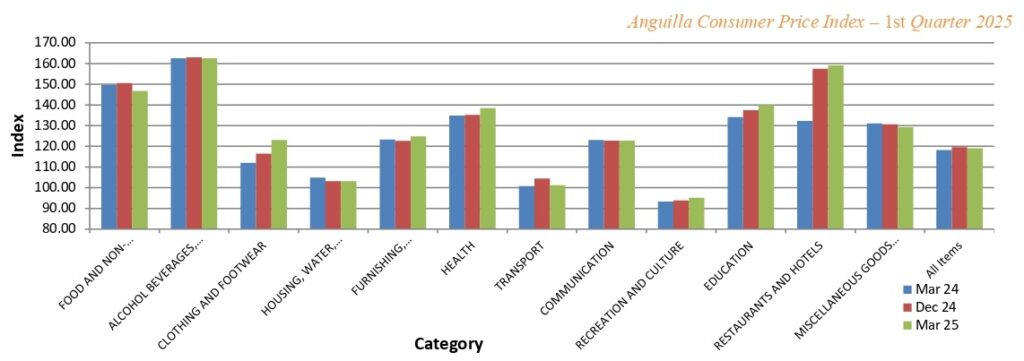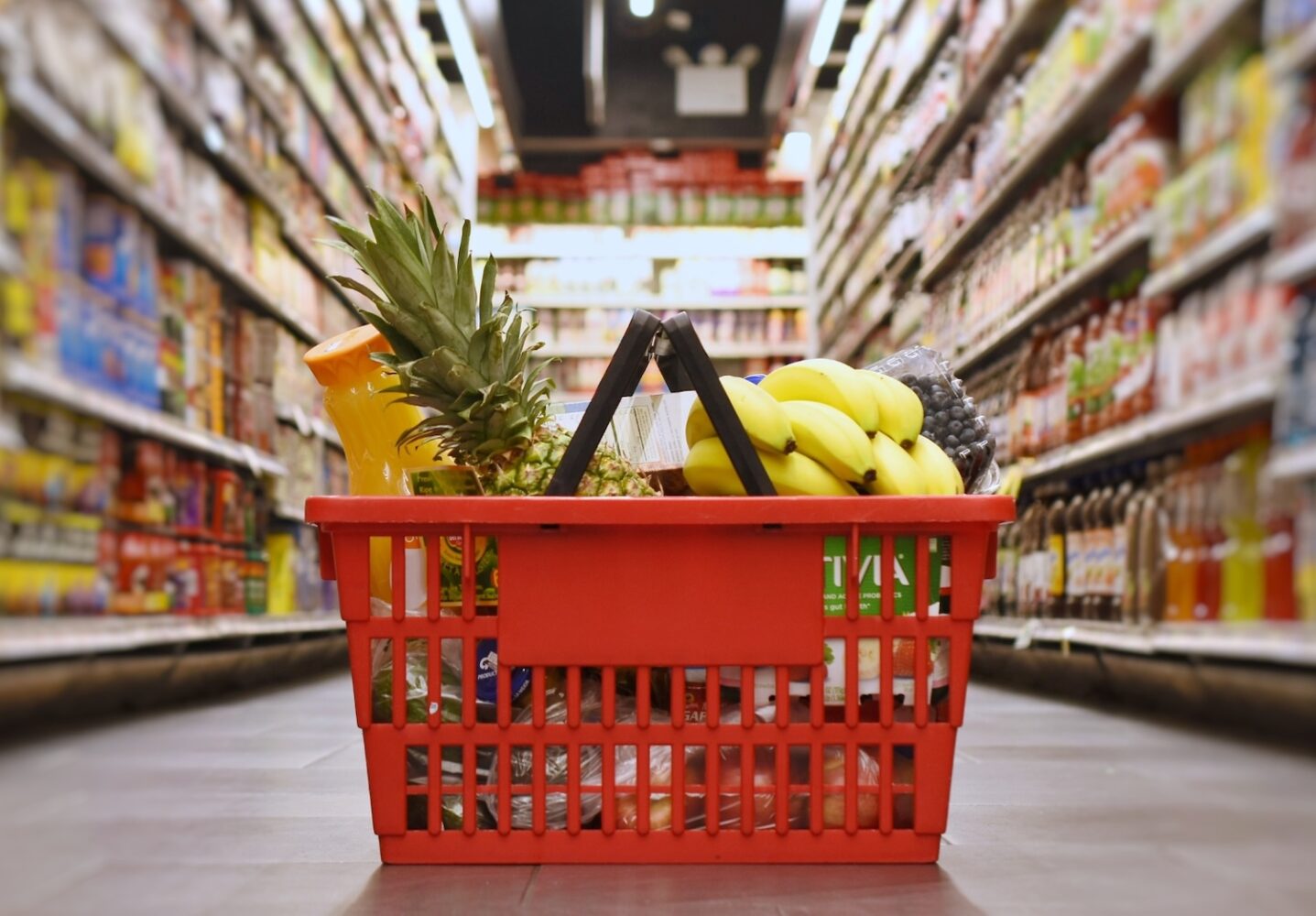The Anguilla Statistics Department has recorded a small reduction in inflation during the first three months of 2025.
From January to March the rate dropped by 0.4% compared to the last quarter in 2024, according to the latest Anguilla Consumer Price Index.
The document shows the rate at which the price of a basket of consumption goods and services changes over a period of time for the island’s households.
Four of the 12 categories during this period contributed to the decline, six others showed increases and two stayed the same.
The rate represented a 0.8% increase compared to the same period in 2024 – well below the global 3 to 4% average – indicating relative price stability.
Price decreases
The transport category registered the largest percentage decrease, with a 3.1% drop compared to the previous quarter.
This decrease was due to the reduction in the average price of ‘passenger transport by air’ of 12.1% for flights to the USA, Santo Domingo and St Thomas, the Statistics Department said.
The ‘food and non-alcoholic beverages’ category was the second largest decrease, dropping by 2.5% over the last quarter.

The department explained that this was due to reductions in the average prices of meat, vegetables, coffee, tea and cocoa, bread and cereals, and fish and seafood.
The ‘miscellaneous goods and services’ category recorded a reduction of 1% due to a 13.1% decrease in the ‘social protection’ sub-category.
And the ‘alcohol beverage and tobacco’ category saw a 0.3% decrease over the last quarter.
The categories ‘housing, water, electricity, gas and other fuel’ and ‘communication’ both stayed the same.
Price increases
‘Clothing and footwear’ saw the largest increase in prices over the last quarter with a 5.7% rise due to an increase in clothing prices while footwear prices remained the same.
The ‘health’ category, the second largest increase, rose by 2.4% due to a bump in the ‘outpatient services’ sub-category – in particular, the cost of an eye test at the opticians.
The cost of ‘education’ rose by 1.8%, due mainly to a 2.2% increase in the sub-category ‘education not defined by level’.
‘Furnishing, household equipment and routine household maintenance’ increased by 1.7%, mostly due to an increase of 19.1% in the ‘household textile’ sub-category.
The ‘recreation and culture’ category recorded a 1.4% increase, and the ‘restaurant and hotel’ category saw a 1% increase.





